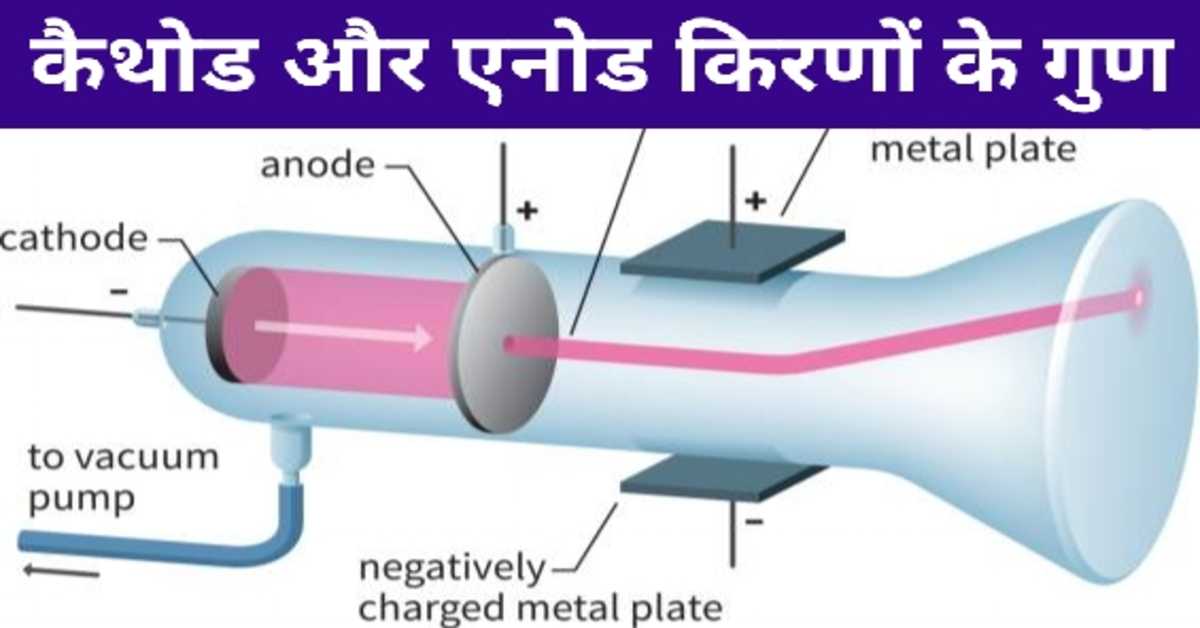.jpg)
परमाणु द्रव्यमान, अणु (आण्विक) द्रव्यमान, सूत्र द्रव्यमान, मोल संकल्पना (संख्या) | Atomic Mass, Molecular Mass, Formula Mass, Mole Concept (Number)
परमाणु द्रव्यमान- किसी भी तत्व का एक परमाणु इतना सूक्ष्मकण होता है कि उसका द्रव्यमान अत्यंत सुग्राही तुला द्वारा भी ज्ञात नहीं किया जा सकता है। अप्रत्यक्ष विधि से हाइड्रोजन व ऑक्सीजन परमाणुओं के परम द्रव्यमान क्रमशः 1.66 × 10 की घात -24 ग्राम व 2.66 × 10 की घात -23 ग्राम ज्ञात किये गए हैं। ये सूक्ष्म संख्स्याएँ गणना के लिए सुविधाजनक हैं। परमाणु द्रव्यमान की तुलना करने के लिए सन् 1961 में रसायनज्ञों के अंतरराष्ट्रीय संघ (IUC) ने कार्बन परमाणु के स्थायी समस्थानिक कार्बन-12 को चुना। परमाणुओं के आपेक्षित द्रव्यमान को दर्शाने की यह इकाई परमाणु द्रव्यमान इकाई amu कहलाती है।
किसी तत्व का परमाणु द्रव्यमान वह संख्या है जो यह दर्शाती है कि उसके एक परमाणु का औसत द्रव्यमान कार्बन-12 परमाणु के 1/12 वें भाग से कितने गुना भारी है।
उदाहरण- हाइड्रोजन का आपेक्षिक परमाणु द्रव्यमान 1.008 amu तथा ऑक्सीजन का 16 amu है। इसका तात्पर्य है कि हाइड्रोजन तत्व का परमाणु कार्बन-12 के एक परमाणु के 12 वें भाग से 1.008 गुना भारी है तथा ऑक्सीजन का 16 गुना भारी है।
1 amu = 1/NA = 1/6.022 × 10 की घात 23 = 1.665 × 10 की घात -24
हाइड्रोजन के एक परमाणु का द्रव्यमान = 1.67 × 10 की घात -24 ग्राम
amu में हाइड्रोजन का द्रव्यमान = 1.67 × 10 की घात -24/1.66 × 10 की घात -24
= 1.008 ग्राम
Atomic Mass- An atom of any element is so tiny that its mass cannot be determined even by a very sensitive balance. By indirect method, the absolute masses of hydrogen and oxygen atoms are found to be 1.66 × 10 to the power -24 g and 2.66 × 10 to the power -23 g respectively. These small numbers are convenient for calculation. In 1961 the International Union of Chemists (IUC) selected the permanent isotope of the carbon atom carbon-12 to compare atomic masses. This unit to represent the relative mass of atoms is called atomic mass unit amu.
The atomic mass of an element is a number that shows how many times the average mass of one of its atoms is 1/12th that of a carbon-12 atom.
Example- The relative atomic mass of hydrogen is 1.008 amu and that of oxygen is 16 amu. This means that an atom of the element hydrogen is 1.008 times heavier than one 12th of an atom of carbon-12 and 16 times that of oxygen.
1 amu = 1/NA = 1/6.022 × 10 to the power 23 = 1.665 × 10 to the power -24
Mass of one atom of hydrogen = 1.67 × 10 to the power -24 grams
Mass of hydrogen in amu = 1.67 × 10 to the power -24/1.66 × 10 to the power -24
= 1.008 grams
रसायन विज्ञान के इन 👇 प्रकरणों को भी पढ़ें।
1. रसायन विज्ञान की प्रमुख शाखाएँ, विभिन्न क्षेत्रों में योगदान और शोध व अध्ययन के संस्थान
2. रसायनज्ञ- डॉ. प्रफुल चंद राय, डॉ. हरगोविंद सिंह खुराना, लेवोजिए
3. डाल्टन का परमाणु वाद एवं इसकी अवधारणाएँ
4. आधुनिक परमाणुवाद तथा अणु और परमाणु में अंतर
5. रासायनिक संयोग के नियम
आणविक द्रव्यमान- किसी अणु में उपस्थित अवयवी परमाणु के परमाणु भारों का औसत द्रव्यमान आण्विक द्रव्यमान कहलाता है।
जैसे- मेथेन का अणुभार 16 ग्राम अर्थात् मेथेन में कार्बन परमाणु का परमाणु भार 12 एवं 4 हाइड्रोजन परमाणुओं का परमाणु भार 4 होगा। इसी प्रकार,
H2O का अणुभार = H परमाणु का परमाणु भार × 2 + O परमाणु का परमाणु भार
= 1 × 2 + 16
= 18 amu
सल्फ्यूरिक अम्ल H2SO4 का अणुभार
= 1 × 2 + 32 + 16 × 4
= 98 amu
ग्लूकोस C6H12O6 का अणुभार= 12 × 6 + 12 + 16 × 6 = 180 amu
Molecular mass- The average mass of the atomic masses of the constituent atoms present in a molecule is called molecular mass.
eg- Molecular weight of methane is 16 grams i.e. the atomic weight of carbon atom in methane will be 12 and that of 4 hydrogen atoms will be 4. Similarly,
Molecular mass of H2O = Atomic mass of H atom × 2 + Atomic mass of O atom
= 1 × 2 + 16
= 18 amu
Molecular weight of sulfuric acid H2SO4
= 1 × 2 + 32 + 16 × 4
= 98 amu
Molecular mass of glucose C6H12O6= 12 × 6 +12 + 16 × 6 = 180 amu
सूत्र द्रव्यमान- जब परमाणु भार, अणु भार या फार्मूला भार को ग्रामों में व्यक्त किया जाता है तब उसे ग्राम परमाणु, ग्राम अणु या ग्राम फॉर्मूला कहा जाता है। अर्थात् किसी यौगिक के सूत्र में उपस्थित तत्वों के परमाणु भारों का कुल योग सूत्र भार कहलाता है।
उदाहरण- सोडियम क्लोराइड का सूत्र भार = सोडियम का परमाणु भार + क्लोरीन का परमाणु भार
= 23 + 35.5
= 58.5
Formula Mass- When atomic mass, molecular weight or formula weight is expressed in grams, it is called gram atom, gram molecule or gram formula. That is, the sum total of the atomic masses of the elements present in the formula of a compound is called formula weight.
Example- Formula weight of sodium chloride = atomic mass of sodium + atomic mass of chlorine
= 23 + 35.5
= 58.5
भौतिकी विज्ञान के इन 👇 प्रकरणों को भी पढ़ें।
1. भौतिक राशियाँ और उनके मात्रक
2. प्रमुख भौतिक शास्त्री एवं उनका योगदान
3. न्यूटन के गति के नियम
4. भौतिकी के प्रमुख उपकरण एवं उनके आविष्कारक
मोल संकल्पना- मोल का अर्थ एक संख्या है जैसे हम एक प्रकार की 12 वस्तुओं के समूह को एक दर्जन या 100 वस्तुओं के समूह को एक सैकड़ा कहते हैं। एक दर्जन पुस्तक से तात्पर्य 12 पुस्तकों से है।
इसी प्रकार परमाणुओं, अणुयों या आयनों की संख्या को गिनने के लिए रसायनज्ञ जिस इकाई का उपयोग करते हैं, उसे मोल कहते हैं। एक मोल 6.022 × 10 की घात 23 कणों का समूह है। संख्या 6.022 × 10 की घात 23 को आवोगाद्रो संख्या कहते हैं। इसे संकेत Na द्वारा प्राप्त कर सकते हैं। मोल को हम निम्न प्रकार से समझा सकते हैं-
1. किसी तत्व के एक ग्राम परमाणु जिसमें 6.022 × 10 की घात 23 परमाणु उपस्थित रहते हैं, मोल कहलाता है।
2. किसी पदार्थ का एक ग्राम अणु जिसमें 6.022 × 10 की घात 23 अणु उपस्थित रहते हैं, मोल कहलाता है।
3. किसी पदार्थ का एक ग्राम आयन जिसमें 6.022 × 10 की घात 23 आयन उपस्थित रहते हैं, मोल कहलाता है।
4. NTP पर किसी गैस या वाष्प के 22.4 लीटर का द्रव्यमान मोल कहलाता है।
Mole Concept- Mole means a number like we call a group of 12 items of a kind as a dozen or a group of 100 items as a hundred. A dozen books means 12 books.
Similarly, the unit used by chemists to count the number of atoms, molecules or ions is called mole. A mole is a group of 23 particles to the power of 6.022 × 10. The number 6.022 × 10 to the power 23 is called Avogadro number. This can be achieved by the sign Na. We can explain mole in the following way-
1. One gram atom of an element in which 23 atoms of power 6.022 × 10 are present, is called a mole.
2. One gram molecule of a substance in which 23 molecules of power 6.022 × 10 are present, is called a mole.
3. One gram ion of a substance in which 23 ions of power 6.022 × 10 are present, is called a mole.
4. The mass of 22.4 liters of a gas or vapor at NTP is called a mole.
यौगिक की मोल संख्या = यौगिक का ग्राम में द्रव्यमान/यौगिक का ग्राम में अणु द्रव्यमान
तत्व की मोल संख्या = तत्व का ग्राम में द्रव्यमान/तत्व का ग्राम में परमाणु द्रव्यमान
Mole number of compound = Mass of compound in grams/Molecular mass of compound in grams
Mole number of element = mass of element in grams/atomic mass of element in grams
इन 👇परीक्षापयोगी प्रकरणों के बारे में भी जानें।
1. जांतव रेशे
2. प्राणियों में पोषण- पाचन तंत्र
3. पादपों में पोषण- प्रकाश संश्लेषण
4. विज्ञान की शाखाएँ-जीवधारियों का नामकरण व वर्गीकरण
5. पारिस्थितिकी तंत्र जैविक एवं अजैविक घटक
6. रक्त का विज्ञान
मोल संकल्पना के अनुप्रयोग निम्नलिखित हैं-
1. किसी तत्व के एक परमाणु द्रव्यमान की गणना करना।
किसी तत्व के एक परमाणु का द्रव्यमान = परमाणु द्रव्यमान/आवोगाद्रो संख्या
2. किसी पदार्थ के एक अणु का द्रव्यमान ज्ञात करना।
किसी पदार्थ के एक अणु का द्रव्यमान = आणविक द्रव्यमान/आवोगाद्रो संख्या
The following are the applications of Mole Concept-
1. To calculate the atomic mass of an element.
Mass of one atom of an element = Atomic mass/Avogadro number
2. To find the mass of one molecule of a substance.
Mass of one molecule of a substance = molecular mass/Avogadro number
इस 👇परीक्षापयोगी प्रकरण को भी पढ़े।
1. मानव नेत्र की दृष्टि दोष- निकट, दूर दृष्टि
आशा है, उपरोक्त जानकारी परीक्षार्थियों / विद्यार्थियों के लिए ज्ञानवर्धक एवं परीक्षापयोगी होगी।
धन्यवाद।
RF Temre
infosrf.com
संबंधित जानकारी नीचे देखें।
(Watch related information below) 👇🏻

आशा है, उपरोक्त जानकारी उपयोगी एवं महत्वपूर्ण होगी।
(I hope the above information will be useful and important. )
Thank you.
लेखक
(Writer)
infosrf.com









(Teacher)
Posted on October 11, 2021 04:10PM from ,
bsc 2ed year ke notes chemistry (organic ,inorganic or physical chemistry)